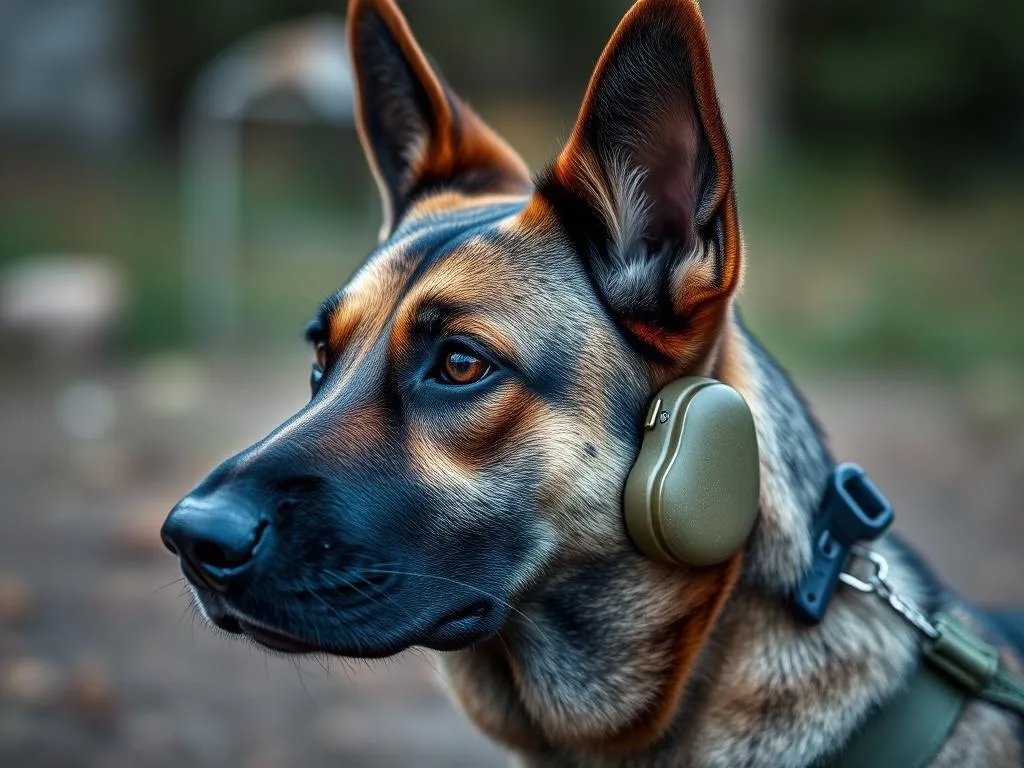
Dog health care is crucial for maintaining the quality of life for our furry friends, particularly for specialized working dogs such as military canines. These dogs face unique challenges, and one critical area that often goes overlooked is military dog ear protection. The importance of ear protection in military settings cannot be understated, as these dogs are frequently exposed to loud noises and stressful environments. This article will delve into various aspects of dog health care, focusing on the unique needs of military dogs and the significance of ear protection.
Understanding Dog Health Care
Importance of Regular Health Check-ups
Regular health check-ups for dogs are essential to ensure their overall well-being. Annual veterinary visits allow for vaccinations, preventative care, and screenings for common health issues. A well-planned vaccination schedule protects not only the dog but also the community from contagious diseases. Additionally, early detection of health problems can lead to successful treatment and improved quality of life.
Common Health Issues in Dogs
Dogs, like humans, can suffer from various health issues. Some prevalent problems include obesity, dental diseases, skin conditions, and allergies. Recognizing the signs and symptoms of these conditions is vital for early intervention. For instance, excessive itching could indicate allergies, while lethargy may point to obesity or dental pain. Maintaining awareness of these issues is critical for dog owners, as early detection can lead to more effective treatment options.
Overview of Military Working Dogs
Role of Military Dogs
Military dogs serve invaluable roles in various operations, including detection, search and rescue, and even combat support. These dogs undergo rigorous training to perform tasks that can save lives, making their health and well-being paramount. A healthy military dog is more capable of executing its duties effectively, whether it’s sniffing out explosives or assisting in tracking down missing personnel.
Unique Health Risks Faced by Military Dogs
Military dogs face specific health risks that differ from those of domestic pets. One of the most significant threats is exposure to loud noises, such as gunfire and explosions, which can lead to hearing damage. Additionally, the stress of working in high-pressure environments can affect their mental health, and physical injuries can occur during missions. Understanding these risks is crucial for formulating proper health care plans tailored to military dogs.
Importance of Ear Protection for Military Dogs
Understanding Canine Hearing
Dogs possess a unique anatomy that allows them to hear sounds at much higher frequencies than humans. Their ears are designed to detect subtle noises, which is essential for their roles in detection and protection. However, this heightened sensitivity also makes them susceptible to hearing damage from loud noises commonly encountered in military settings.
Risks of Hearing Damage
Prolonged exposure to loud environments can lead to permanent hearing damage in dogs. Military dogs may frequently find themselves near gunfire, explosions, and heavy machinery, all of which can cause significant auditory stress. The consequences of this type of exposure can include disorientation, anxiety, and an inability to perform necessary tasks effectively. Therefore, the implementation of military dog ear protection is critical in safeguarding their hearing and overall well-being.
Military Dog Ear Protection Solutions
Types of Ear Protection Available
There are several types of ear protection products available for military dogs, including earplugs and earmuffs.
- Earplugs: These are designed to fit snugly in the dog’s ear canal and reduce sound levels significantly. They are often made from soft materials to ensure comfort.
- Earmuffs: These cover the entire ear and can provide a more substantial barrier against loud noises. They may be more effective for prolonged exposure but can be bulkier and require proper fitting.
When selecting ear protection, it is essential to compare the effectiveness and comfort of each option to ensure the best fit for the working dog.
How to Choose the Right Ear Protection
Choosing the right ear protection for military dogs involves several factors:
- Size and Fit: Proper sizing is crucial. Ear protection that is too loose may not provide adequate protection, while overly tight options can cause discomfort.
- Material: Consider materials that are soft and hypoallergenic to prevent irritation.
- Recommendations: Consulting with veterinarians and professionals who specialize in military dog care can provide valuable insights into suitable products.
Training Dogs to Wear Ear Protection
Acclimatizing military dogs to wear ear protection is a critical step in ensuring their comfort and acceptance of these devices. Here’s a step-by-step guide for training:
- Introduce the Equipment: Begin by showing the dog the ear protection without forcing them to wear it. Let them sniff and explore it.
- Positive Reinforcement: Use treats and praise to create positive associations. Reward the dog when they interact with the ear protection.
- Gradual Wearing: Start by placing the ear protection on the dog for short periods. Gradually increase the time they wear it while continuing to reward them.
- Desensitization: Expose the dog to sounds gradually while they wear the ear protection. Start with soft noises and progress to louder sounds to help them adjust.
By following these steps, dogs can learn to wear ear protection comfortably, reducing the risk of hearing damage.
Additional Health Care Considerations for Military Dogs
Nutrition and Diet
A balanced diet is vital for maintaining the health and performance of military dogs. These dogs require a diet rich in proteins, vitamins, and minerals to support their active lifestyles. High-performance dog food is often recommended, which typically contains higher protein content to fuel their energy needs. Consulting with a veterinarian for tailored dietary suggestions is advisable to ensure optimal health.
Physical Fitness and Exercise
Regular physical activity is essential for military dogs to maintain their strength and stamina. Each dog may have specific exercise requirements based on its breed and task. Engaging in various activities—such as running, agility training, and obedience drills—can help build physical fitness. Ensuring a proper exercise regimen is crucial for the overall health and performance of military dogs.
Mental Health and Enrichment
Mental stimulation is equally important for military dogs. Engaging them in activities that challenge their minds can help alleviate stress and prevent behavioral issues.
- Interactive Toys: Puzzle toys that dispense treats can keep dogs engaged and mentally stimulated.
- Training Sessions: Regular training not only reinforces obedience but also provides mental challenges.
- Socialization: Allowing dogs to interact with other dogs and people can enhance their social skills and reduce anxiety.
By focusing on both mental and physical health, military working dogs can remain effective and happy in their roles.
Conclusion
In conclusion, dog health care is a multifaceted responsibility that is especially critical for military working dogs. These dogs face unique challenges that require specialized attention, including the need for military dog ear protection. By understanding their specific health risks and implementing appropriate care strategies, we can promote the well-being of these noble canines. As we emphasize the importance of ear protection alongside nutrition, exercise, and mental stimulation, we ensure that military dogs remain healthy, happy, and capable of performing their vital roles.









